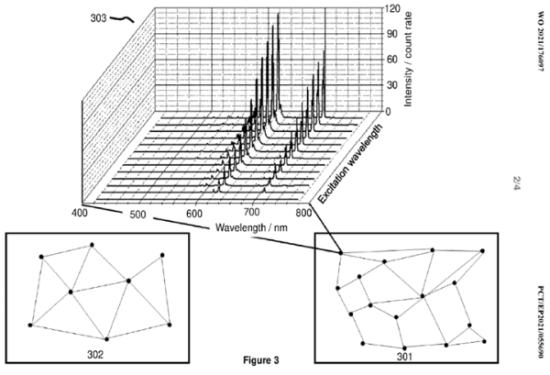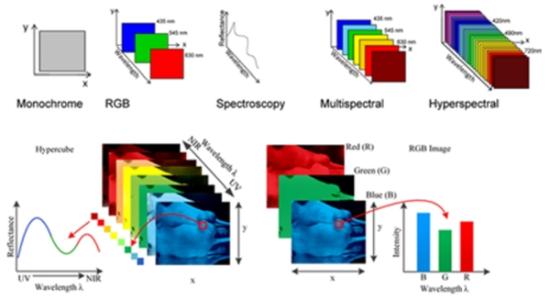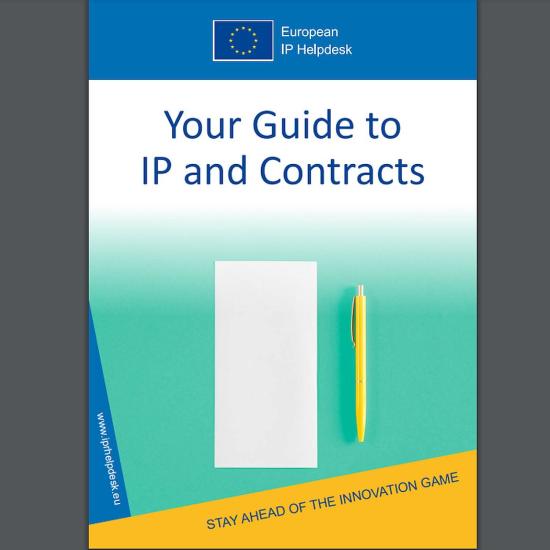A recent patent application reveals a new authentication solution in the fight against materials counterfeiting, one that combines hyperspectral imaging with machine learning.
It is important for companies that have intellectual property rights that they can take robust action against counterfeiting or unauthorized use or distribution of their innovative materials and products. However, it is not always easy for them to prove these infringements of their IP rights. Marking solutions, often invisible to the naked eye, allow companies to recognise the authenticity of a product.
Spectral signature
One established way of monitoring and verifying the origin of materials throughout the supply chain is to add markers with a unique spectral signature to the base material, but in such low concentrations that the properties of the material are not affected. One application of this technique is to mark textile fibres or plastics, either in the material itself or in a coating. Using spectroscopy, these luminescent markers can be detected in a piece of textile or a moulded plastic product at a later stage to confirm the origin of the material.
Although this detects whether the material of desired origin is present, it is still possible that it was mixed or diluted with cheaper or inferior material. The intensity of the luminescent signal from the markers could indicate this, but this also depends on the specific setup of the spectrometer used and other process steps on the material such as colouring, which can lead to errors in determining the ratio in which the marked material is present.
Composite signal
Tailorlux's patent application (WO2021/176097 A1 van 10-September-2021) removes this shortcoming by combining spectroscopy with information from images. The number of markers and their relative positions in an image of the product are related to a quantitative measurement of the proportion of the marked material in a mixture of multiple materials. Using machine-learning techniques such as neural networks and deep learning, a data analysis model is built that identifies the materials present from the composite signal of image and spectroscopic data, selects the correct reference data set and quantifies the proportion of the marked material.
The above figure (source: WO2021/176097 A1) compares the image data for two materials containing luminescent markers:
- (301) shows the positions of the markers in a first material
- (302) shows the positions of the markers in a second material containing a smaller proportion of the marked material.
- (303) shows the spectral signal from a single point in (301); the time-dependent spectral signal records the luminescent response of the marker to further characterise the marker.
HSI
A hyperspectral camera is used to capture the composite signal of image- and spectroscopic data over a range of wavelengths. Hyperspectral Imaging (HSI) is a passive, non-invasive technology that essentially detects reflected light at a large number of contiguous wavelengths in a spectral range of interest to the application. This makes it possible to visualise materials and determine their composition at the same time.
Imaging, spectroscopy and imaging spectroscopy
(Source: Mehta N, Shaik S, Devireddy R, Gartia M. Single-Cell Analysis Using Hyperspectral Imaging Modalities. ASME. J Biomech Eng. 2018;140(2):020802-020802-16. doi:10.1115/1.4038638)
Originally developed by NASA for remote sensing, satellite and space applications, HSI has become a reliable and robust sensor system in the recycling industry for distinguishing substances. Recently, the food and agriculture sectors have also emerged as important areas of application for HSI, where the technology is used, among other things, for quality measurement and detecting contamination.
Would you like to know more about the potential of hyperspectral imaging for your application? Sirris can help you perform a study of the feasibility of a vision solution based on hyperspectral imaging.
Source
WO2021/176097 A1 (Tailorlux Gmbh, 10/09/2021): Method and system for analysing materials
https://www.tailorlux.com/en/
The Sirris Patent Cell is supported by the FPS Economy federal public service.






